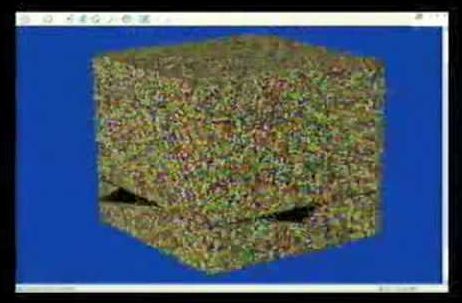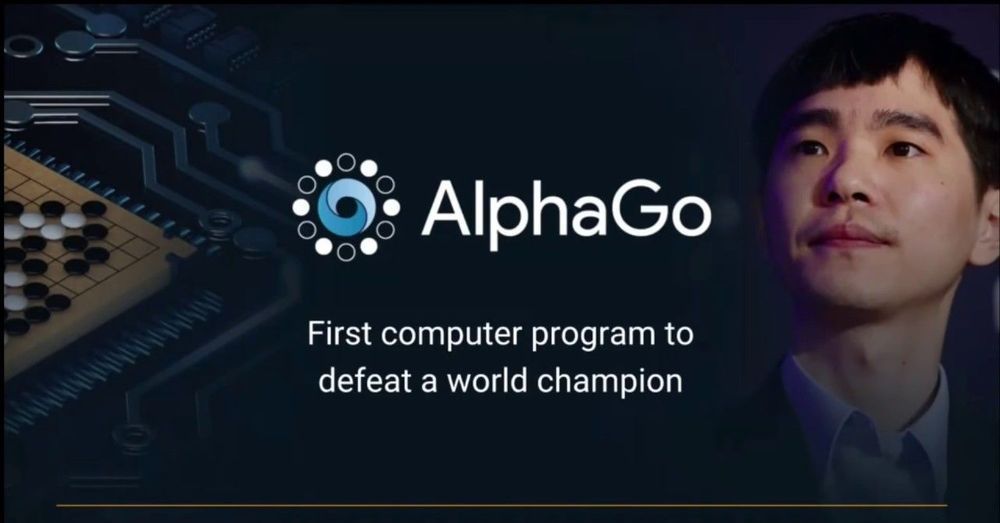Page 8887
May 2, 2019
1000 x 1000 x 1000 Rubik’s Cube Solve
Posted by Quinn Sena in categories: computing, media & arts

The biggest rubik’s cube… ever, being solved by a computer.
Please watch the new updated video instead (unless you really enjoy YouTube’s AudioSwap music): https://www.youtube.com/watch?v=0cedyW6JdsQ
May 2, 2019
AlphaGo Zero: Discovering new knowledge
Posted by Quinn Sena in categories: entertainment, robotics/AI

DeepMind’s Professor David Silver describes AlphaGo Zero, the latest evolution of AlphaGo, the first computer program to defeat a world champion at the ancient Chinese game of Go. Zero is even more powerful and is arguably the strongest Go player in history.
Previous versions of AlphaGo initially trained on thousands of human amateur and professional games to learn how to play Go. AlphaGo Zero skips this step and learns to play simply by playing games against itself, starting from completely random play. In doing so, it quickly surpassed human level of play and defeated the previously published champion-defeating version of AlphaGo by 100 games to 0.
Continue reading “AlphaGo Zero: Discovering new knowledge” »
May 2, 2019
Deepmind AlphaZero — Mastering Games Without Human Knowledge
Posted by Quinn Sena in categories: entertainment, robotics/AI

2017 NIPS Keynote by DeepMind’s David Silver. Dr. David Silver leads the reinforcement learning research group at DeepMind and is lead researcher on AlphaGo. He graduated from Cambridge University in 1997 with the Addison-Wesley award.
Recorded: December 6th, 2017
May 2, 2019
Buzz Aldrin Calls For “Great Migration of Humankind to Mars”
Posted by Michael Lance in category: space travel
We explore, or we expire. That is why we must get on with it.
The astronaut sees the Moon as a stepping stone.
May 2, 2019
Scientists Are Teaching AI-Powered Robots to Reproduce, Evolve
Posted by Quinn Sena in category: robotics/AI
May 2, 2019
Concord Posts Record Growth and Introduces New Pricing Model
Posted by Quinn Sena in categories: finance, law
Concord, the fastest-growing contract management platform company, today announced accelerated market adoption of its cloud-based contract management platform and 2.5x revenue growth over the last 12 months. There are now 260,000 companies on the Concord Software as a Service (SaaS) platform. The Concord SaaS platform drives horizontal adoption by providing all key stakeholders collaborative access to the contract drafting, negotiation, signing and renewal processes within a single cloud-based platform.
Concord also announced a new pricing model. Unlike other contract management solutions that charge per seat regardless of usage, Concord pricing reflects the actual functionality needed by different stakeholders. Pricing is now based on Creator, Collaborator and Viewer usage options. For example, legal teams need Creator usage comprising full platform functionality including contract creation, editing and negotiation rights. Procurement, HR and sales teams typically only require Collaborator rights such as contract requests and the ability to select from previously approved form fields. Finance teams often only need Viewer rights to have visibility to track contract status, time to revenue and renewals. DevOps teams simply need API access to connect and integrate with other enterprise tools. By pricing and providing access according to need, the Concord platform is seamless and economical to adopt throughout an organization.
The cross-functional and external stakeholder proliferation capability is unique to Concord and a key factor to Concord’s platform adoption dramatically outpacing that of its competitors. For example, 64 new customers from vertical industries including e-commerce, logistics and healthcare have joined the Concord platform in the past two quarters. The horizontal approach Concord takes to the contracting process creates a powerful network effect which has resulted in 60,000 new users to the platform in the past two quarters.
Continue reading “Concord Posts Record Growth and Introduces New Pricing Model” »
May 2, 2019
How automation is enabling modern problem-solving
Posted by Quinn Sena in categories: information science, mathematics, robotics/AI
With the possibility of millions or an infinite number of problems automating everything will cause all things to be solved digitally into a simple math problem. The problems could essentially be hacked by shores algorithm or maybe a theory of everything like m theory or Stephen Hawking’s theory of everything. Maybe it is just as simple as a basic formula like Einstein created E=mc2. Also like some mathematicians have theorized maybe just one line of code that solves everything.
Automation is a game-changer for modern problem-solving – enabling not only visibility to real-time operations but the ability to effectively project the impact of potential solutions into the future. As problem-solvers become more comfortable using the new tools available to them, companies will be able to effectively isolate (and avoid) the impact of problems to their operations and focus their resources on solving the underlying issues and enabling long-term success. Learn More here.
May 2, 2019
6 Deceptively Simple Maths Problems That No One Can Solve
Posted by Quinn Sena in category: mathematics
We all know that maths is really hard. So hard, in fact, that there’s literally a whole Wikipedia page dedicated to unsolved mathematical problems, despite some of the greatest minds in the world working on them around the clock.
But as Avery Thompson points out at Popular Mechanics, from the outset at least, some of these problems seem surprisingly simple — so simple, in fact, that anyone with some basic maths knowledge can understand them… including us. Unfortunately, it turns out that proving them is a little harder.
Inspired by Thompson’s list, we’ve come up with our own list of deceptively simple maths problems to frustrate (and hopefully inspire) you.
Continue reading “6 Deceptively Simple Maths Problems That No One Can Solve” »
May 2, 2019
Using computers to crack open centuries-old mathematical puzzles
Posted by Quinn Sena in categories: computing, information science, mathematics
Andrew Wiles’ proof of Fermat’s Last Theorem is a famous example. Pierre de Fermat claimed in 1637 – in the margin of a copy of “Arithmetica,” no less – to have solved the Diophantine equation xⁿ + yⁿ = zⁿ, but offered no justification. When Wiles proved it over 300 years later, mathematicians immediately took notice. If Wiles had developed a new idea that could solve Fermat, then what else could that idea do? Number theorists raced to understand Wiles’ methods, generalizing them and finding new consequences.
No single method exists that can solve all Diophantine equations. Instead, mathematicians cultivate various techniques, each suited for certain types of Diophantine problems but not others. So mathematicians classify these problems by their features or complexity, much like biologists might classify species by taxonomy.















